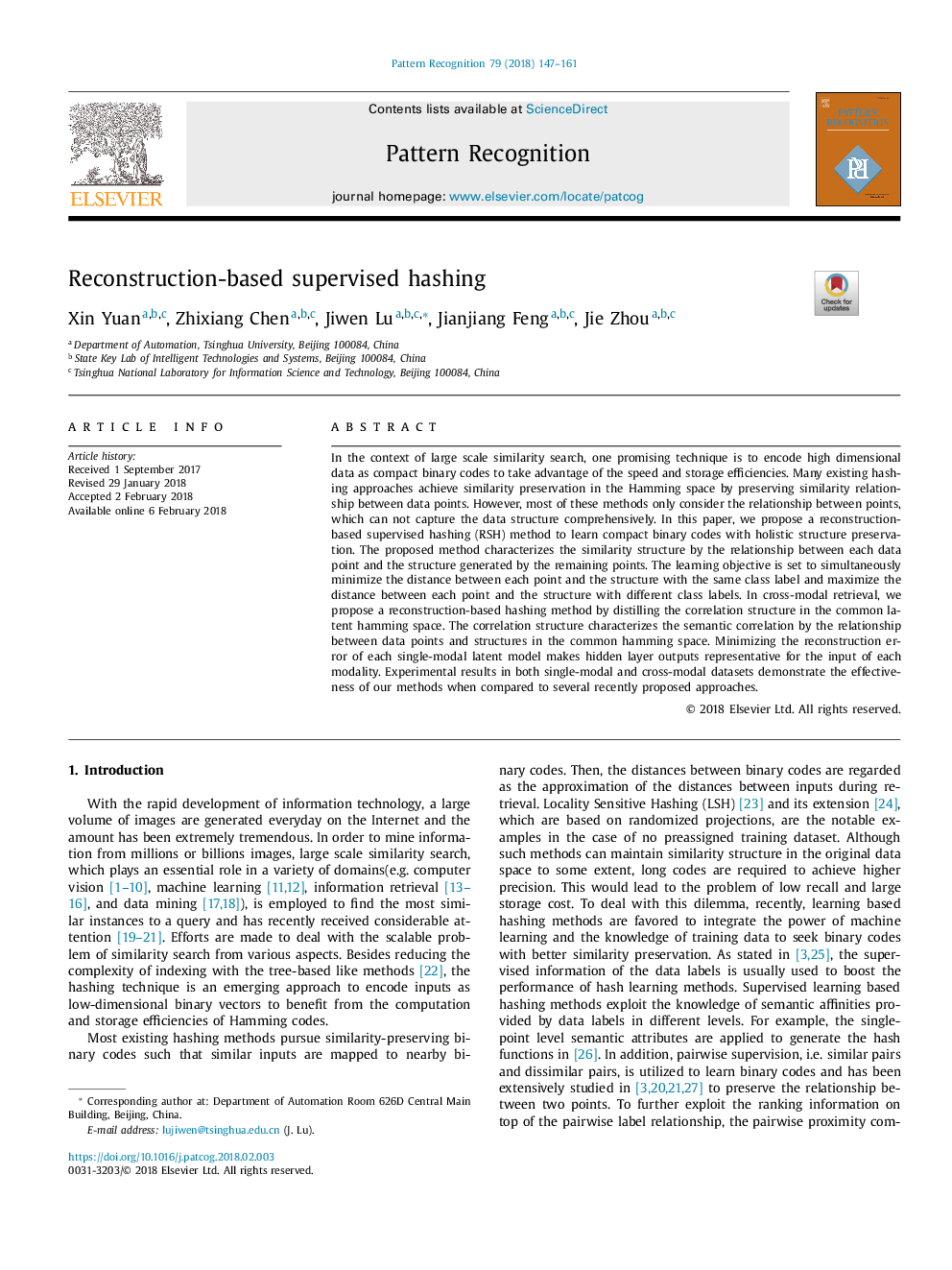| Article ID | Journal | Published Year | Pages | File Type |
|---|---|---|---|---|
| 6939086 | Pattern Recognition | 2018 | 15 Pages |
Abstract
In the context of large scale similarity search, one promising technique is to encode high dimensional data as compact binary codes to take advantage of the speed and storage efficiencies. Many existing hashing approaches achieve similarity preservation in the Hamming space by preserving similarity relationship between data points. However, most of these methods only consider the relationship between points, which can not capture the data structure comprehensively. In this paper, we propose a reconstruction-based supervised hashing (RSH) method to learn compact binary codes with holistic structure preservation. The proposed method characterizes the similarity structure by the relationship between each data point and the structure generated by the remaining points. The learning objective is set to simultaneously minimize the distance between each point and the structure with the same class label and maximize the distance between each point and the structure with different class labels. In cross-modal retrieval, we propose a reconstruction-based hashing method by distilling the correlation structure in the common latent hamming space. The correlation structure characterizes the semantic correlation by the relationship between data points and structures in the common hamming space. Minimizing the reconstruction error of each single-modal latent model makes hidden layer outputs representative for the input of each modality. Experimental results in both single-modal and cross-modal datasets demonstrate the effectiveness of our methods when compared to several recently proposed approaches.
Related Topics
Physical Sciences and Engineering
Computer Science
Computer Vision and Pattern Recognition
Authors
Xin Yuan, Zhixiang Chen, Jiwen Lu, Jianjiang Feng, Jie Zhou,
